"Enter these enchanted woods, you who dare..."
- George Meredith, 1828-1909
Today I'm taking a look at the part trees play in Fantasy literature and whether authors in the genre have taken the Victorian poet's advice to heart. :)
Overall, it appears we have.
Ents, of course, are probably the most famous “trees”, or in their case, treelike beings, in Fantasy literature. They feature in the second and third books of The Lord of the Rings trilogy and played a major part in The Two Towers film, with the attack on, and destruction of Isengard:
“Pippin looked behind. The number of Ents had grown — or what was happening? Where the dim bare slopes that they had crossed should lie, he thought he saw groves of trees. But they were moving! Could it be that the trees of Fangorn were awake, and the forest was rising, marching over the hills to war? He rubbed his eyes wondering if sleep and shadow had deceived him; but the great grey shapes moved steadily onward.”
Sentient trees also feature in CS Lewis’s Narnia series and I’ve always loved the scene in Prince Caspian where Aslan reawakens the trees that have slept as a result of the Telmarine invasion:
“What Lucy and Susan saw was a dark something coming to them from almost every direction across the hills. It looked first like a black mist creeping on the ground, then like the stormy waves of a black sea rising higher and higher as it came on, and then, at last, like what it was — woods on the move. All the trees of the world appeared to be rushing towards Aslan.”
Sometimes, however, it is not a forest but a single tree that features — like the world tree in Mary Victoria’s Chronicles of the Tree series, which is first encountered in Tymon’s Flight:
“To starboard of the vessel…stretched a vast and furrowed mountain of bark, so wide that it’s curvature was almost invisible and so high that both its summit and its base were lost to view. The immensity of the wall was broken by a profusion of spoke-like limbs, the largest many miles in length. Several hundred feet above the dirigible the trunk culminated in the gently rising plateau of branches and twigs that made up the Central Canopy’s crown.”
Werewolves and other were-beasts have become very popular in recent years, but Fantasy contains at least one instance of tree-shifting: Danan Isig in Patricia McKillip’s The Riddlemaster of Hed, who teaches the skill to the protagonist, Morgon:
“Was I a tree? Sometimes I stand so long in the snow watching the trees wrapped in their private thoughts that I forget myself, become one of them. They are as old as I am, as old as Isig. . .”
When discussing trees in Fantasy I really can't go past the weirwood that stands at the heart of Winterfell, in George RR Martin’s A Game Of Thrones:
“At the center of the grove an ancient weirwood brooded over a small pool where the waters were black and cold. “The heart tree,” Ned called it. The weirwood’s bark was white as bone, its leaves dark red, like a thousand bloodstained hands. A face had been carved in the trunk of the great tree, its features long and melancholy, the deep-cut eyes red with dried sap and strangely watchful.”
And yep, trees do play a significant part in my own books, too.
Because Thornspell is a retelling of Sleeping Beauty — from the perspective of the prince who breaks the spell — the story needs must dives straight into George Meredith's "enchanted wood" territory:
“The road did not go far, petering out into a bridle path within a few hundred yards of the castle wall, and fading away altogether beneath the forest eave. It was very dark and quiet beneath the canopy, a heavy, listening silence. There was no call of bird or insect, no whisper of falling leaf—not even the wind stirred.”
Probably the most significant way in which trees shape the landscape in The Heir of Night (The Wall Of Night, Book One) is through their absence. The Wall of Night is a bleak, wind-blasted and lifeless environment and the contrast to more clement terrain only occurs in the last part of the book, when the protagonists cross into the hills of Jaransor:
“Eventually, Malian began to see the green shimmer of trees growing along small precipitous creeks, and they stopped at last in a narrow ravine where the trees formed a green roof and a stream ran clear over brown pebbles.”
In The Gathering of the Lost (The Wall Of Night, Book Two), trees and woods are a far more significant part of the worldscape:
“Mostly, Malian let the others talk as the miles fell behind them and Maraval forest rose up ahead like a green cloud … as the road took them deeper into the wood … the cavalcade fell silent, and the only sound was the clip of their horses’ hooves, the song of birds, and the deep susurration of the myriad leaves overhead.”
“Malian let her mind follow the secondary route, leaping over huddled villages with their sheep pens and rocky fields, to settle on a pine grove near the crest of the road’s first long ascent into the foothills. She had camped a night in the dry earthy hollow beneath the trees, which grew so close together that only the very heaviest rain fell between the branches. Now, it was the best shelter she could recall along the route’s wild terrain.”
So the arrows of evidence do seem to be pointing in the same direction: which is that trees play a significant part in Fantasy world-building, including my own work.
 |
| Mary Victoria's world tree - art (c) by Frank Victoria |
How about you? Got any favorite trees in Fantasy literature to add to my list? All types of Fantasy welcome, from magic realism, through paranormal urban, to epic. :)
---
Helen Lowe is a novelist, poet, interviewer and blogger whose first novel, Thornspell (Knopf), was published to critical praise in 2008. Her second, The Heir of Night (The Wall Of Night Series, Book One) won the Gemmell Morningstar Award 2012. The sequel, The Gathering Of The Lost, was shortlisted for the Gemmell Legend Award in 2013. Daughter Of Blood, (The Wall Of Night, Book Three) is her most recent book and she is currently working on the fourth and final novel in The Wall Of Night series. Helen posts regularly on her “…on Anything, Really” blog and is also on Twitter: @helenl0we











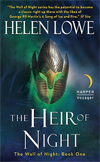
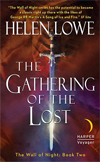


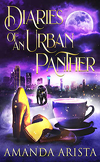
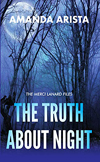

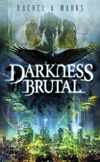
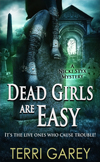
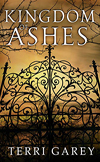
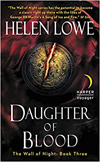
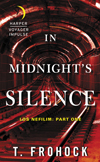
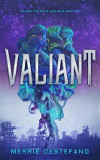
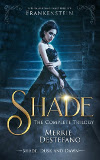

8 comments:
Thank you for the mention, Helen! :) I grew up on a diet of trees in Tolkien and always felt they were grand and magical things. Especially Telperion and Laurelin, the two trees in Valinor... silver and gold, like two sides of a gate. There's something very gate-like about trees in general - they often act as passageways to other worlds (hollow trees, fairy trees, the Wood Between the Worlds, etc.)
Mary, I loved the Chronicles of the Tree. The concept of the World Tree alone was inspiring, and you brought it so beautifully to life.
Helen, I was moved by the trees and the tree people, the Dryads, in David Eddings Belgariad. Especially X'Nedra.
Great article and references!
I suppose the ultimate in world trees is Yggdrasil, but with your tree the size of the Himalayas, you've taken it somewhere unique, Mary - so thoroughly merited the mention here.
Thank you dear Kim, that makes me happy to know! :) And yes Helen, Yggdrasil is the granddaddy of all world trees... The original inspiration for all of us, I expect.
Where do these ideas come from? I wonder if someone has dug around to find the possible source of the world tree myth... It would be old, very old. I know the Siberians had a similar concept and that the 'tree of life' motif is ubiquitous. *squints into distance* Is that a PHD subject I see in the distance?
I have to add another world tree, or rather island tree, while we're at it: Kaaron Warren's 'Walking the Tree' features a huge and wonderful tree that the protagonist circumnavigates on a long walkabout. Great stuff
Thoraiya Dyer's Crossroads of Canopy, the first volume of a trilogy set in a forest of gigantic, magic-infused trees -- larger than life but not as big as Mary Victoria's -- is well worth a look.
Hi Mary,
I think I needs must leave the PhD to another--although I would read the conclusions with interest. :)
And "Yes" to Kaaron Warren's "Walking the Tree." I still remember when you first intro'd me to it!
Hi Simon,
Welcome to the SU.:)
Thoriaya Dyer's "Crossroads of Canopy" is new to me, but on your recommendation I shall definitely check it out.
Post a Comment